Participants gathered on a slightly gloomy Thursday afternoon in front of the National Museum at the foot of the statue of János Arany. Despite a light shower, the mysteries of the garden were still to be explored, including the adventurous life of the statues in the garden, and the changes made during the 2018–2019 reconstruction to ensure that the garden becomes not only a worthy area of national remembrance but a green for relaxation, rest and even, exciting adventures.
Cues to discovery
The sculptures and statues of the garden are the best starting point for exploring the garden. Since the completion of landscaping work, small signs with QR-codes have been placed near these works to allow guests to learn more about them.

Small signs help visitors learn more about the statues (Photo: Dorottya Osváth/pestbuda.hu)
The first statue to be placed in the Museum Garden was that of Dániel Berzsenyi, erected in 1860.
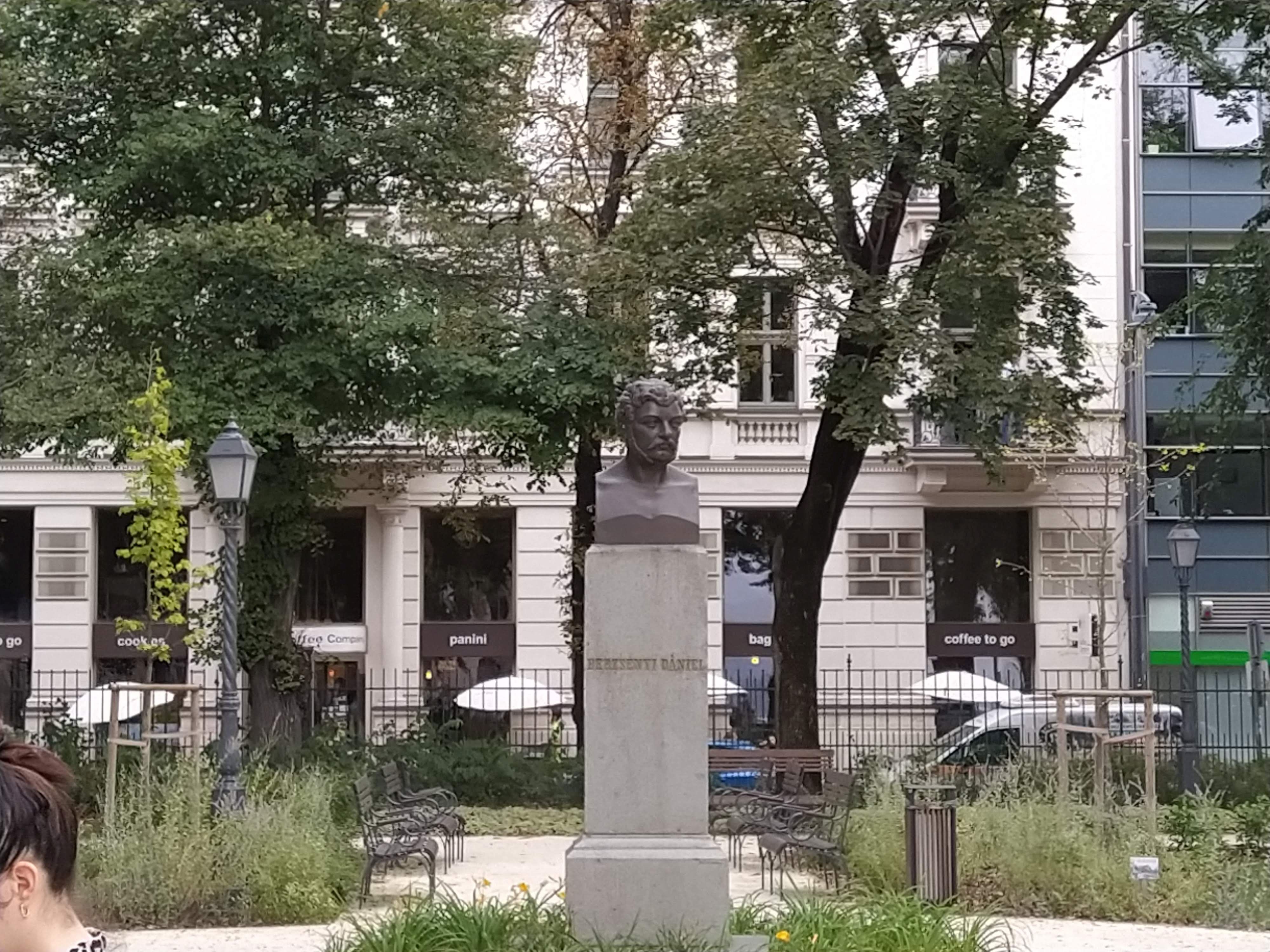
Statue of Dániel Berzseni in the Museum Garden (Photo: Dorottya Osváth/pestbuda.hu)
This was joined by a statue of Ferenc Kazinczy on 16 March 1861. The placement of the two statues created the base of a small circle, that later fuelled the process of transforming the green into a garden of statues, and an area of national remembrance.
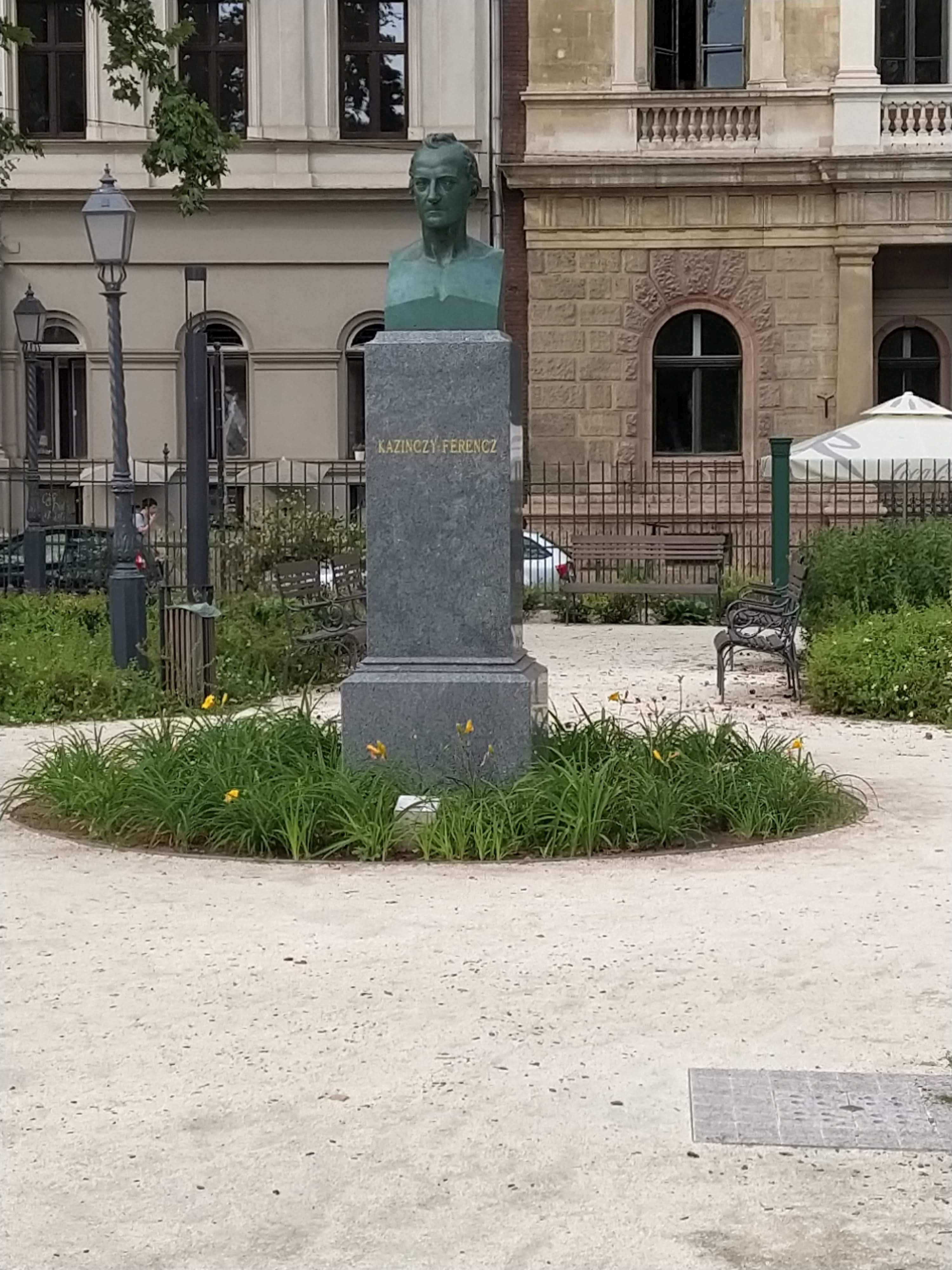
The statue of Ferenc Kazinczy was erected in 1861 (Photo: Dorottya Osváth/pestbuda.hu)
Naturally, the founder of the National Museum, Ferenc Széchenyi, also has a statue in the garden. Erected in 1902 the statue now stands to the left of the stairs when moving towards the main entrance. However, it originally stood at the side gate, which now serves as the administrative entrance to the building. Originally, visitors also entered the Museum through this door, as the main entrance was used by members of the House of Lords that sat in the ceremonial hall of the building before the parliament building was constructed.
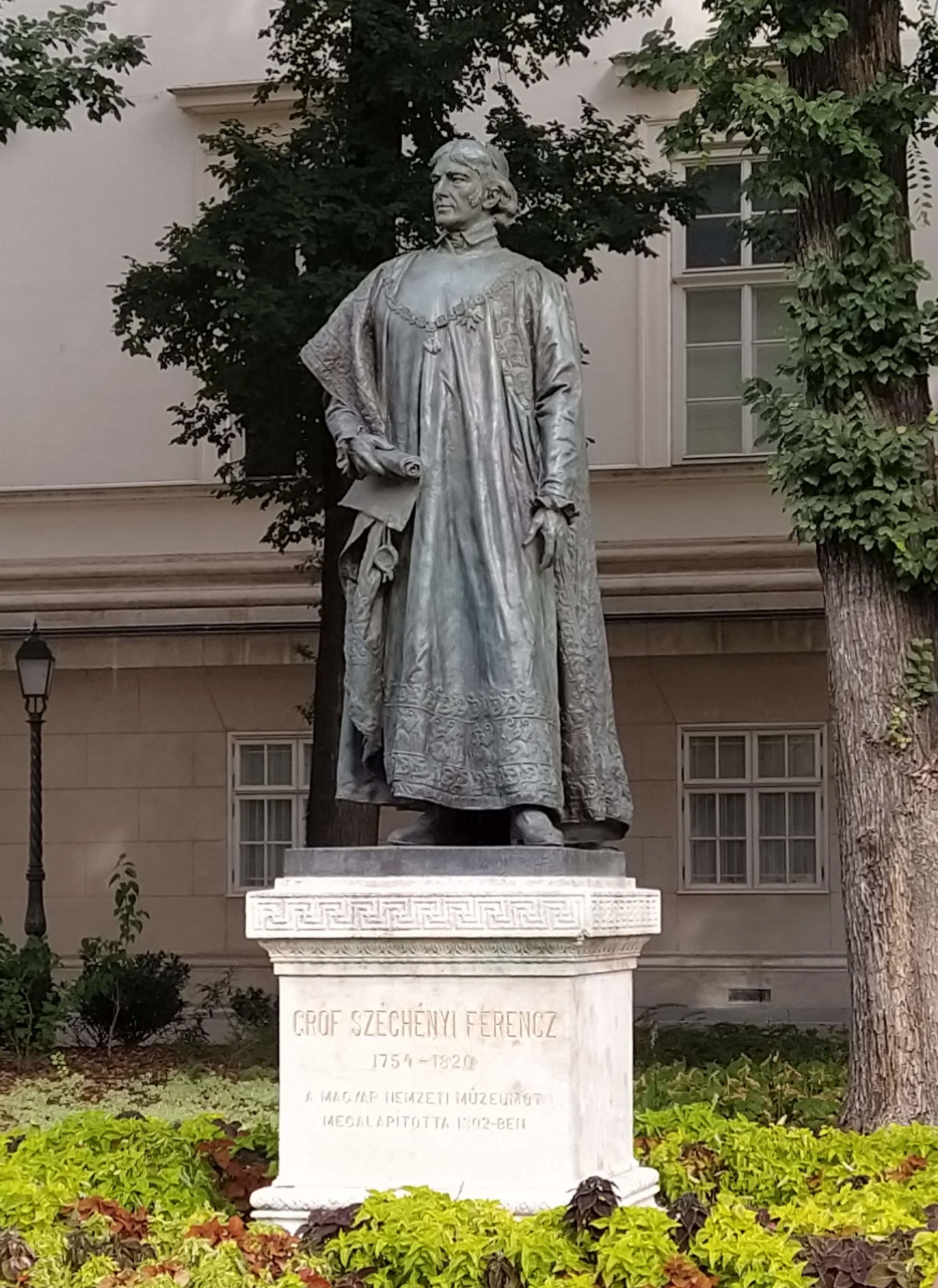
Statue of Ferenc Széchényi in the garden (Photo: Dorottya Osváth/pestbuda.hu)
.jpg)
Today an administrative entrance, once where visitors entered the building (Photo: Dorottya Osváth/pestbuda.hu)
During the walk, Béla Debreczeni-Droppán emphasised that an effort had been made during the renovation to return most sculptures to their original places. However, if a more fitting place was found for a statue – such as in the case of Ferenc Széchényi – then the original location was changed.
The exact reconstruction of the garden was also hindered by the fact that several statues had been damaged by the vicissitudes of history. For example, the memorial of Ottó Herman originally included a stone pool, into which water trickled from the pedestal of the statue, transforming the statue of the famous ornithologist into a birdbath. Károly Kisfaludy was originally honoured with a full statue rather than a bust, but other parts of the work were lost during the battle that raged in the garden during the second world war.
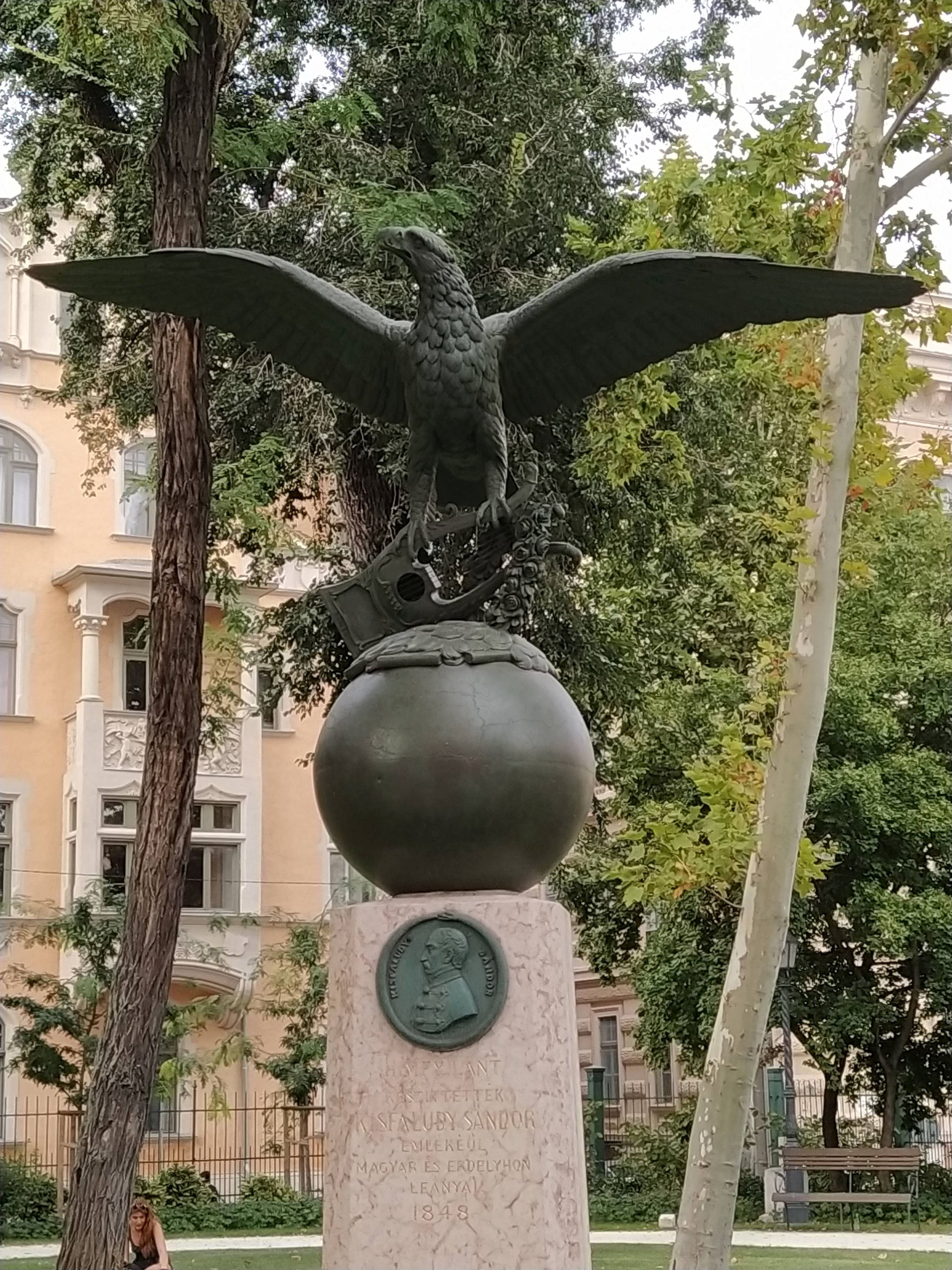
Monument to Sándor Kisfaludy in the garden (Photo: Dorottya Osváth/pestbuda.hu)
The simplest memorial of the greatest value
If a small QR-code were note placed beside it, visitors could easily simply walk past one of the most interesting works in the garden, which is dwarfed somewhat by the monumental sculptures around it.
The simple stone column is a memorial stone, erected in honour of George Washington, the first US president and Alexander von Humbolt, the German scientist. The stone was originally commissioned by Ferenc Kubinyi, a well-known 19th-century scientist and reform politician on 15 March 1858. however, due to the repressive governance following the suppression of the war of independence in 1488–49, the stone originally stood in his own garden, and was moved here only later.
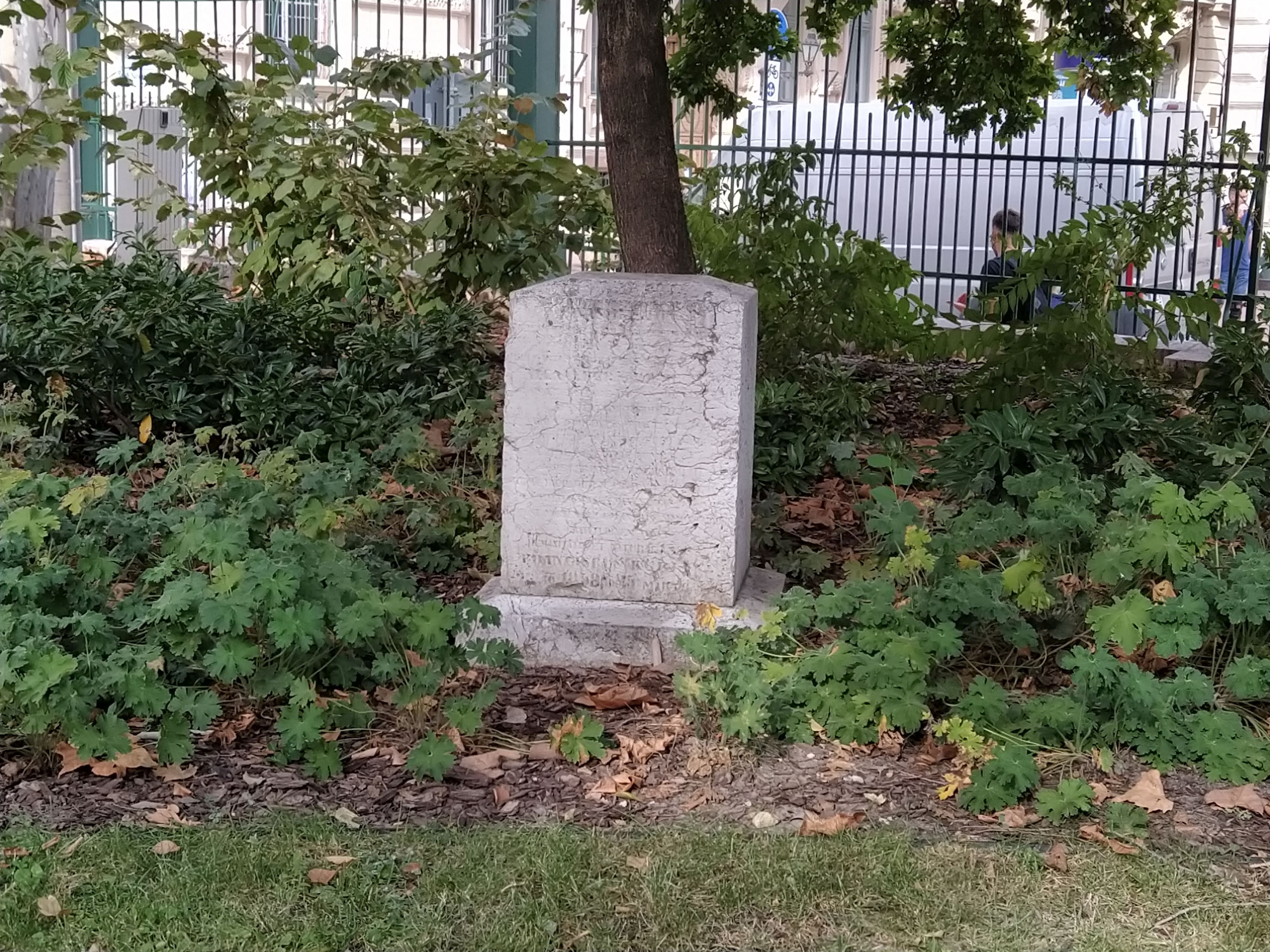
The memorial stone may also serve to commemorate Lajos Kossuth (Photo Dorottya Osváth/pestbuda.hu)
The seemingly insignificant stone column is the first Hungarian monument to George Washington and is quite possibly the first memorial of Alexander von Humbolt in the world. However, the timing of its creation suggests it also serves to commemorate a third person, Lajos Kossuth.
Béla Debreczeni-Droppán added, it was probable that the stone column served to commemorate Kossuth as well because by 1851 he was often referred to as the "Hungarian Washington". Furthermore, recording not only the year – as would be traditional – but the exact date the stone was erected strengthens this hypothesis.
The memorial column is sadly in a rather poor condition. Its Latin inscriptions are illegible, and the text is only known from a contemporary newspaper article, in which the anonymous journalist received a copy of the inscription in a letter for Kubinyi.
Work to preserve the monument is underway, and plans have been made to roof the stone to better protect it in winter.
Muzi, Muzicka, Múzium
The Museum Garden is not only a space of national remembrance but an increasingly popular community area. The playground is full of laughing children, and benches line the shaded walking paths, groups of students sit on the grass as someone plays the guitar among the trees.
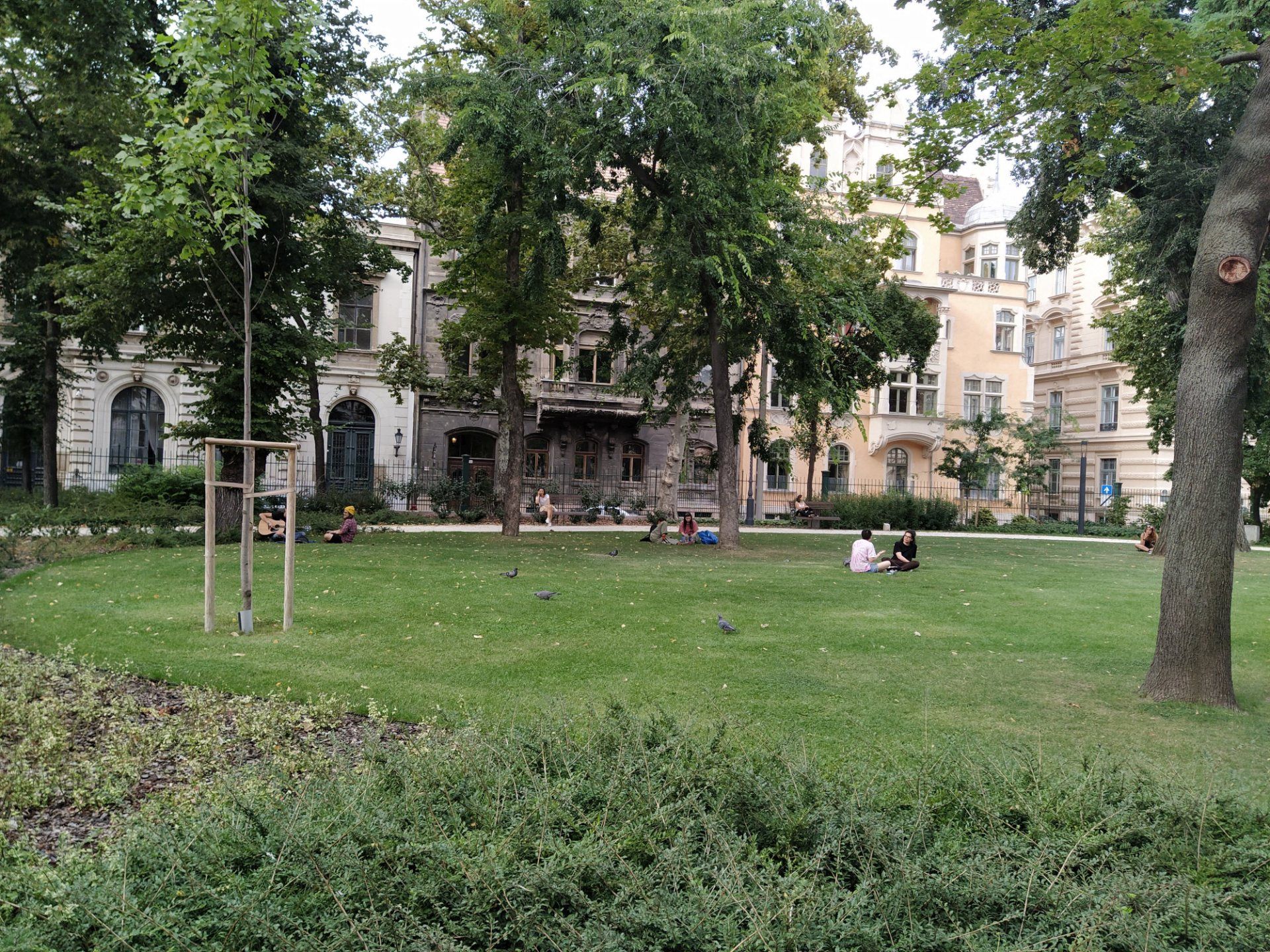
The garden is also a popular community space (Photo: Dorottya Osváth/pestbuda.hu)
Béla Debreczeni-Droppán went on to say that the part of the garden behind the Museum has always been popular among youths. This is the part nicknamed Muzi or Muzicska [muzichka]. In the classic novel by Ferenc Molnár, The Paul Street Boys, the boys refer to it as Múzium.
Original plans placed a lapidarium in this area of the garden; however, this was never completed. In 1852 a gardener's house was built, which today serves as an exhibition space, but will become a café in the future.
The building is also to be named Geraldine, after Geraldine Apponyi, who before becoming Queen of Albania, sold museum publications and postcards in the entrance hall of the Museum, and even stepped in as the information desk through her knowledge of languages.
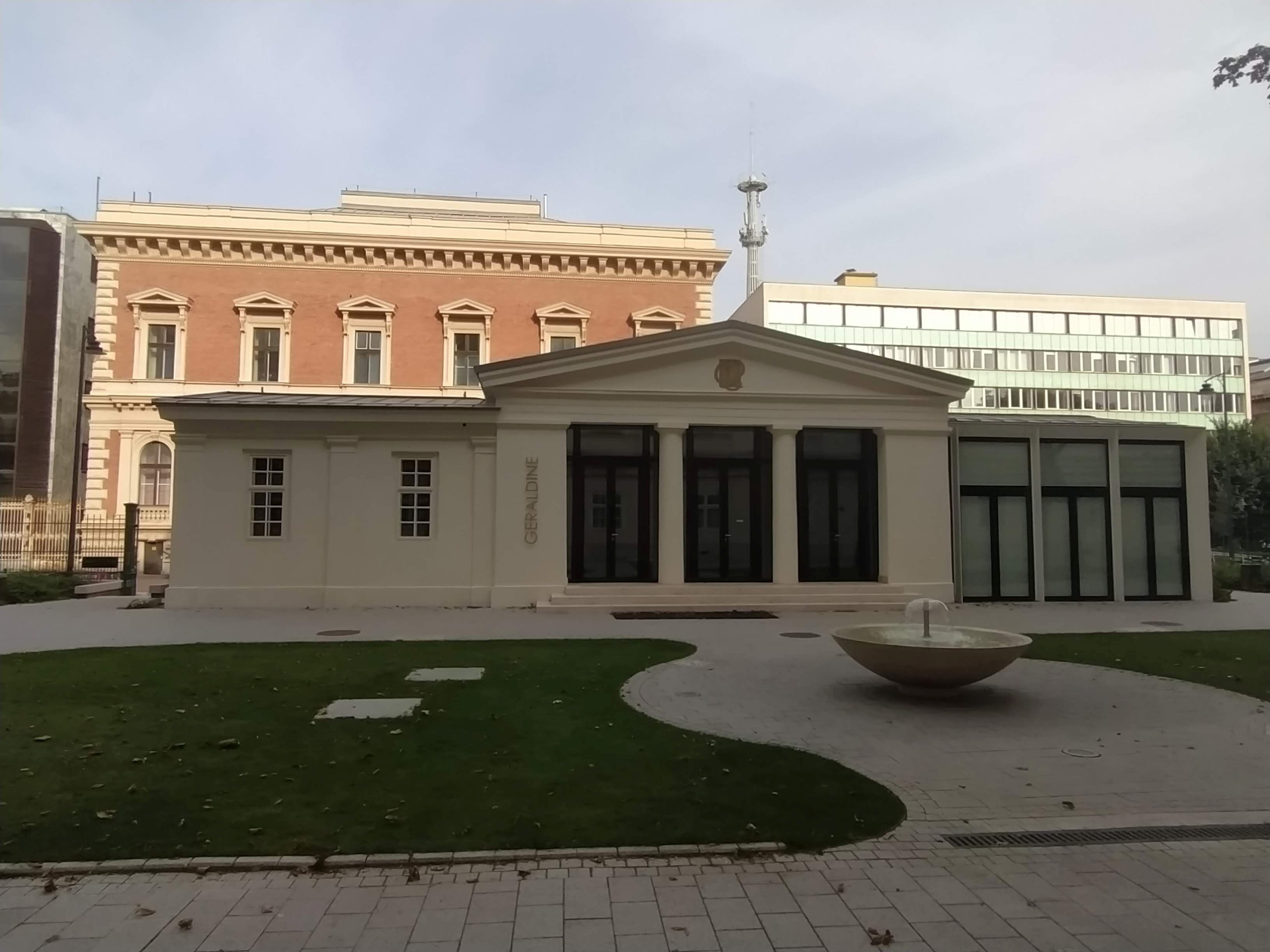
The back of the garden will also be full of life. A café will open in what used to be the gardener's house (Photo: Dorottya Osváth/pestbuda.hu)
The only fountain in the garden can be found here, before the newly renovated building. A Zsolnay fountain originally decorated the garden, even in the first decades of the 20th century. Known as the duck fountain due to its blue eosin-glazed ducks, only a small part of the pedestal can be seen today.
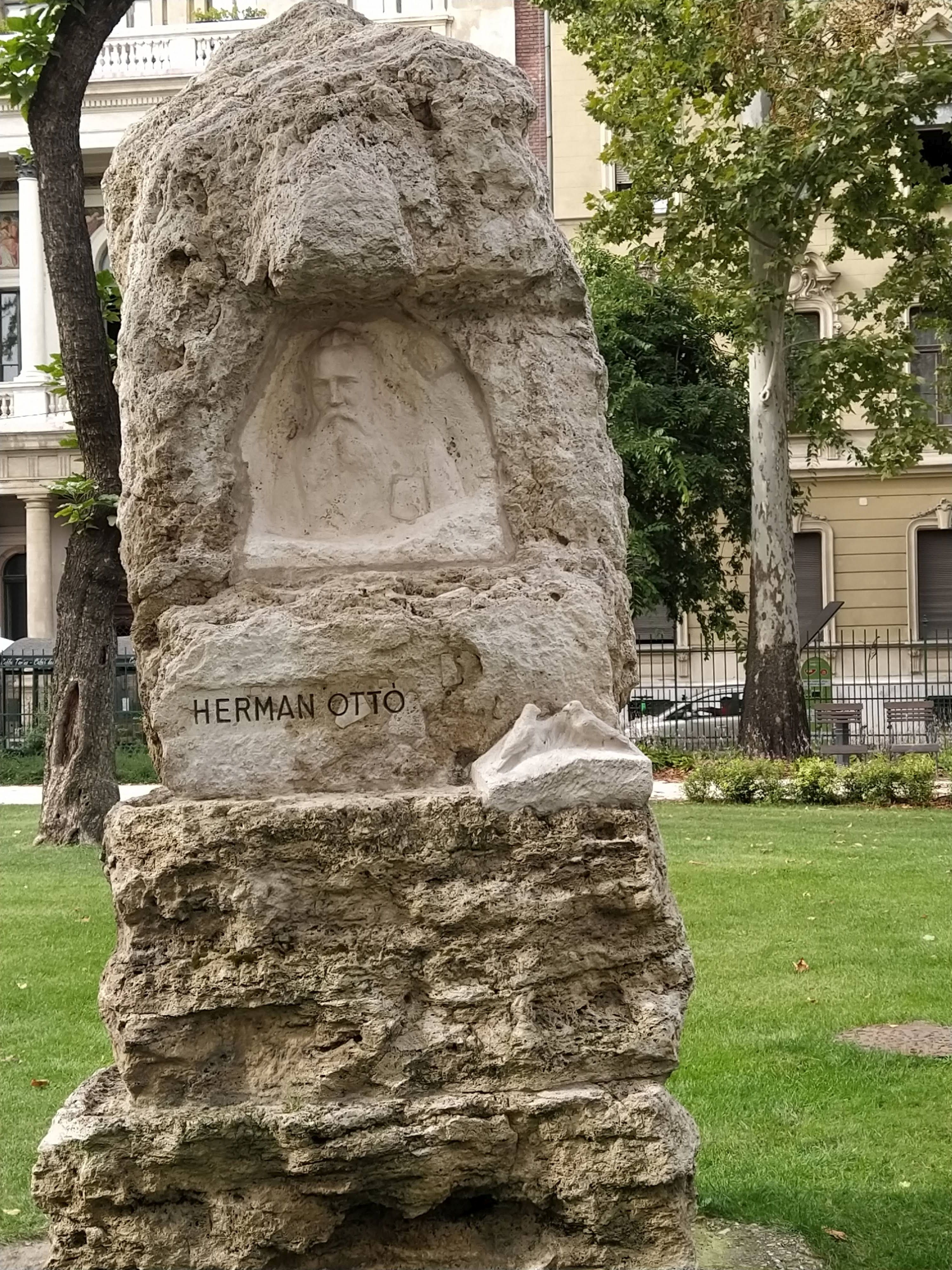
A stone pool was one a part of the Otto Hermann statue (Photo: Dorottya Osváth/pestbuda.hu)
A version of the fountain can be seen in the Janus Pannonius Museum in Pécs, as several copies were later produced. The original, which was displayed at the Milan World Fair, however, was donated to the Museum by Zsolnay himself in 1909. After a while, the fountain was turned off, and later plans were made to move it to the Zoo. Eventually, it ended up in the Museum's basement, where parts of it were found a few years ago. Sadly, the ducks seem to have flown off, possibly as a result of the world wars of other historical events.
The back garden is still the most popular among the young. During the reconstruction, a playground in the style of The Paul Street Boys was built and named Muzi.
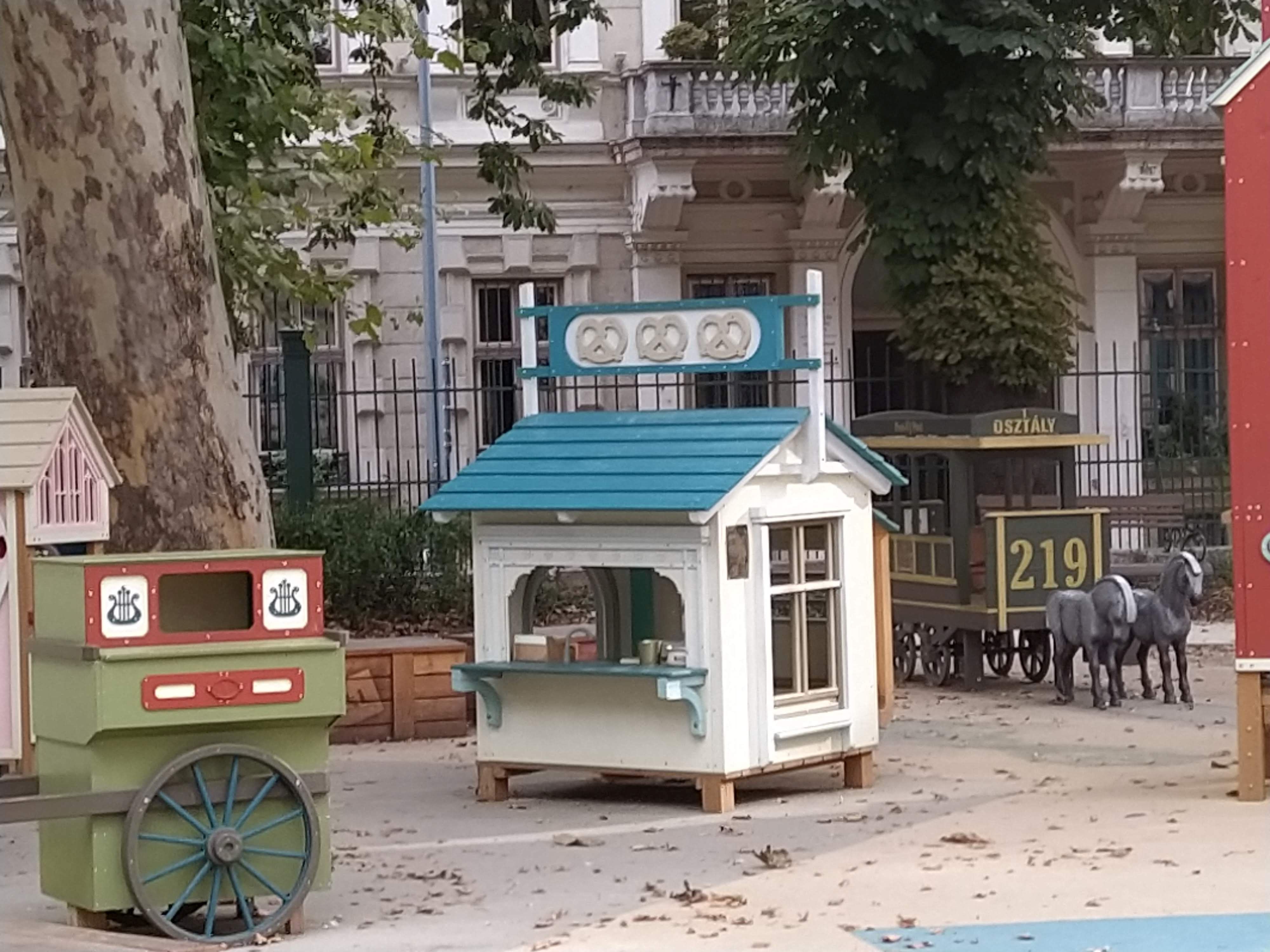
The Muzi playground evokes an atmosphere reminiscent of the turn of the century (Photo: Osváth Dorottya/pestbuda.hu)
The chest-shaped benches are inscribed with the names of characters from Ferenc Molnár's novel, and the novel Muzi, by Árpád Pásztor. Are board for marble games can be found in the area, as can marble vending machine, while the toys showcase the ring-road of old, the horse-cart that once ran along the road, or an old bakery.
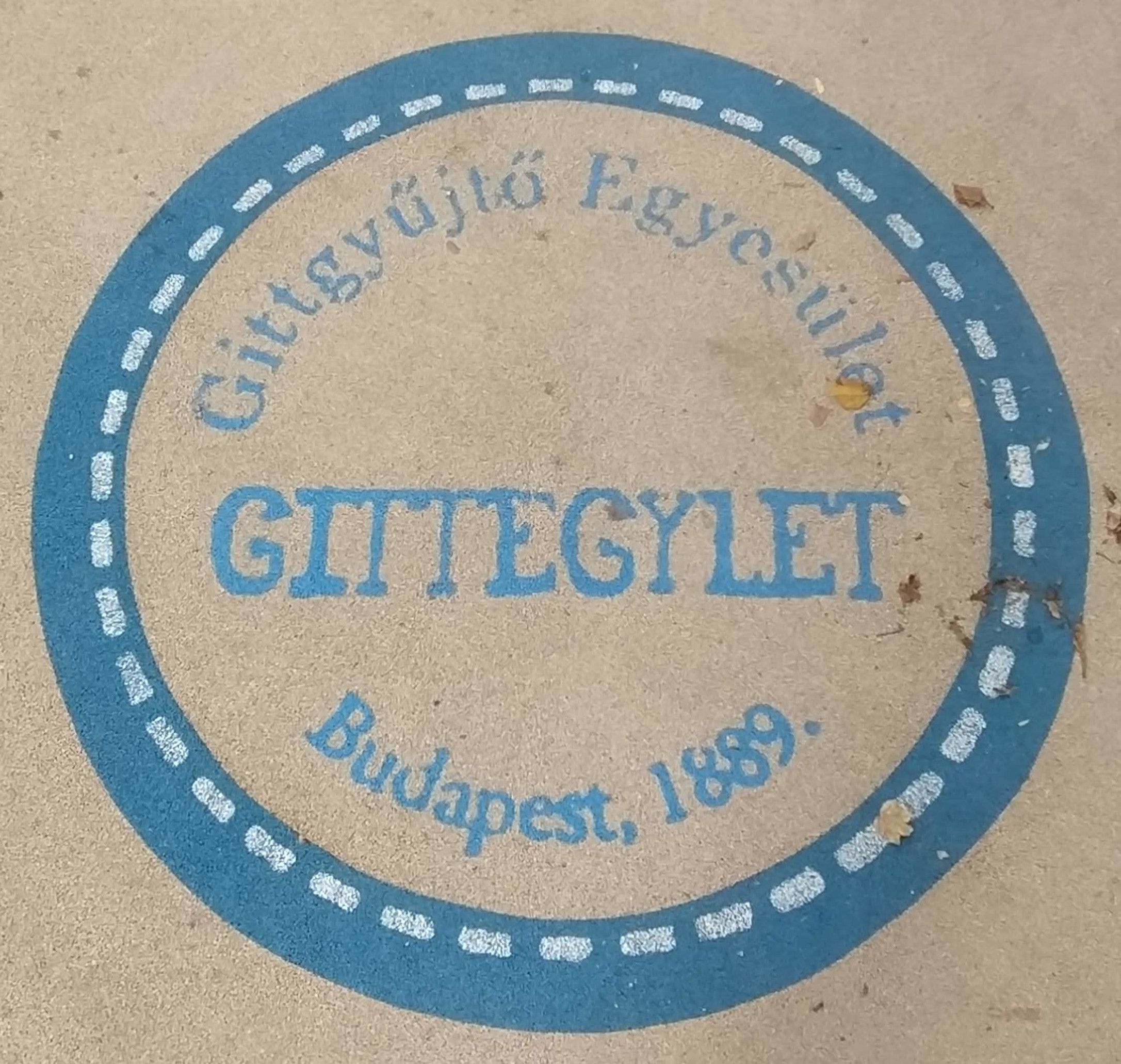
The putty group from the Paul Street Boys (Photo: Dorottya Osváth/pestbuda.hu)
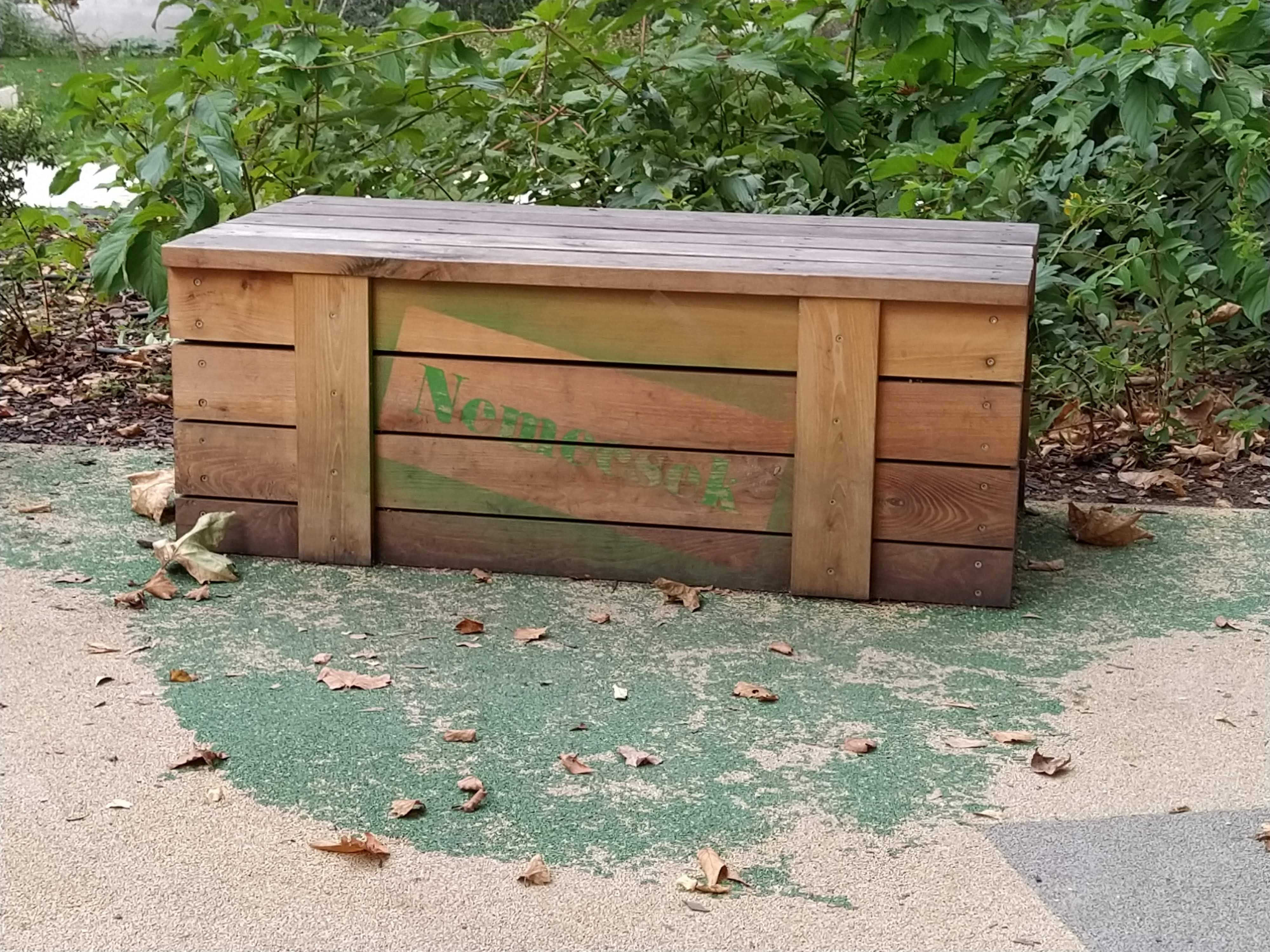
Bench inscribed with the name Nemecsek in the playground (Photo: Dorottya Osváth/pestbuda.hu)
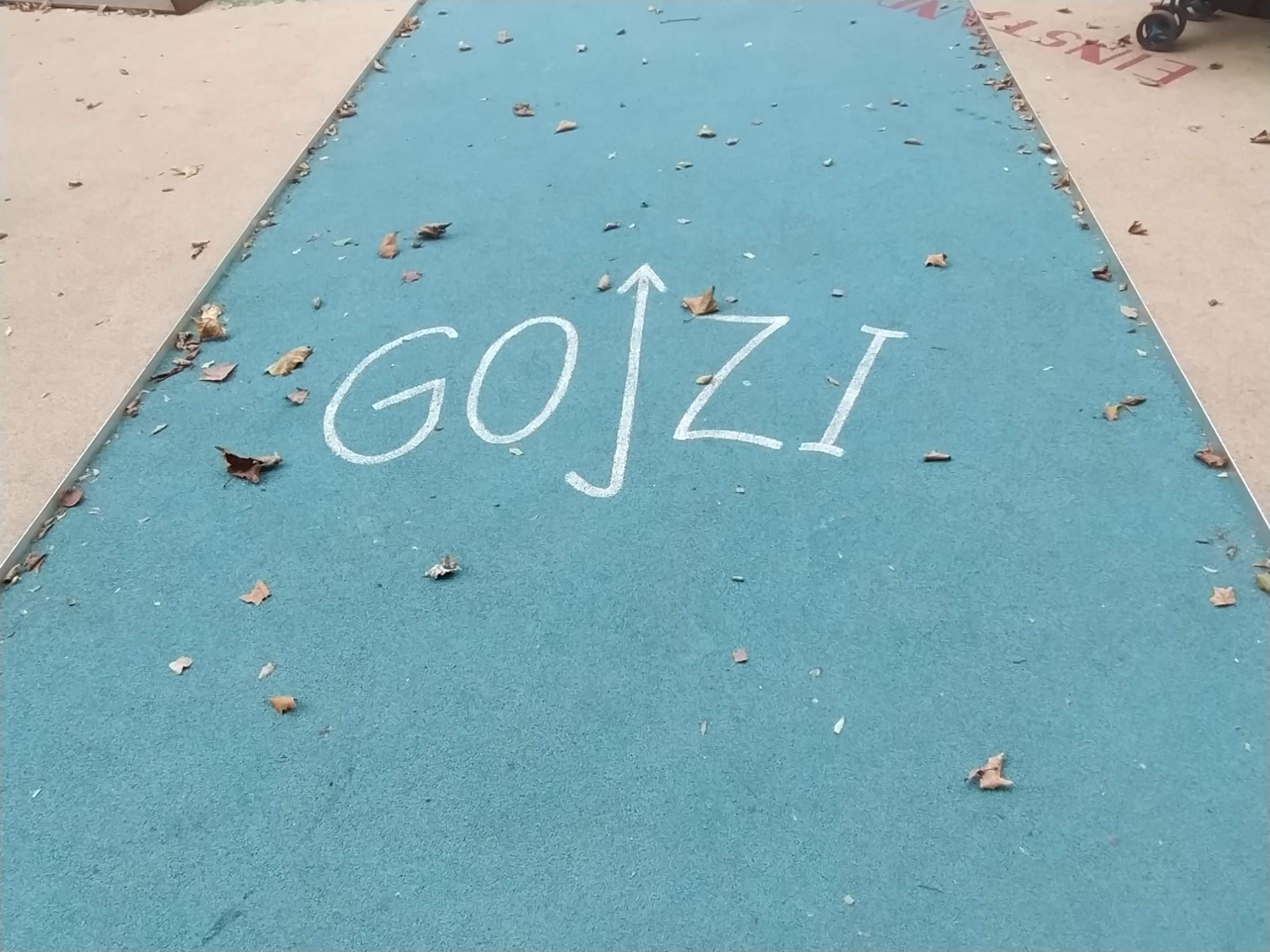
An area to play with marbles from the nearbyí vending maching (Photo: Dorottya Osváth/pestbuda.hu)
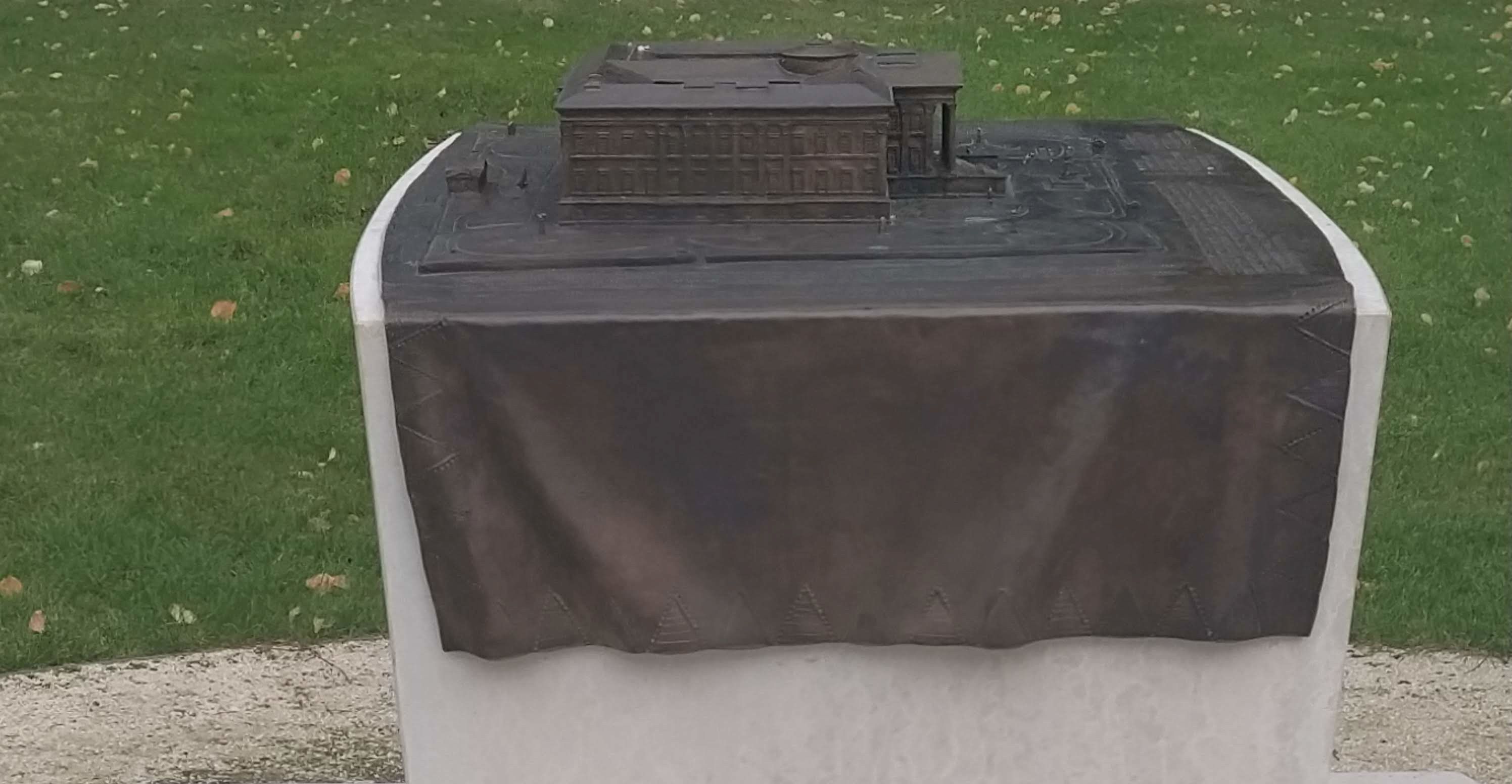
A miniature model of the garden and Museum building were also placed in the garden during the reconstruction (Photo: Dorottya Osváth/pestbuda.hu)
A miniature model of the garden and Museum building were also placed in the garden during the reconstruction. An increasing number of such models can be found, as they not only allow the visually impaired to experience these buildings and locations but are popular among children and photographers, too.
Cover photo: A miniature model of the Museum Garden (Photo: Dorottya Osváth/pestbuda.hu)

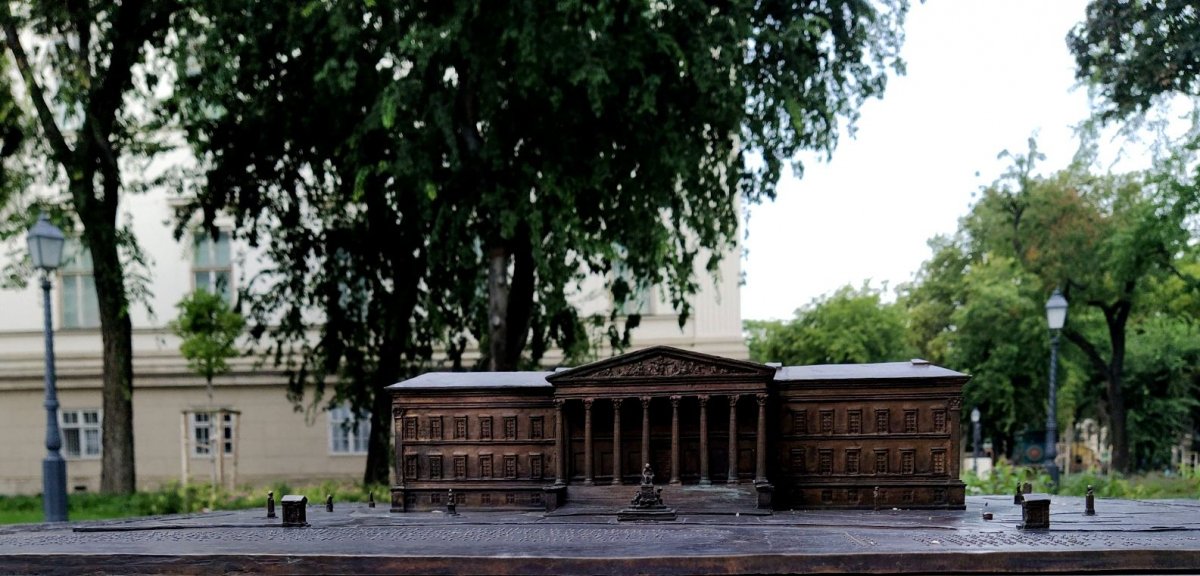

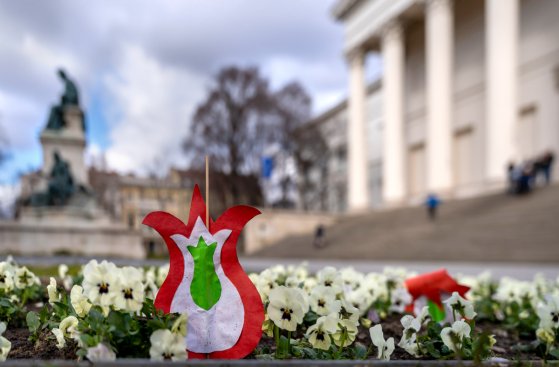
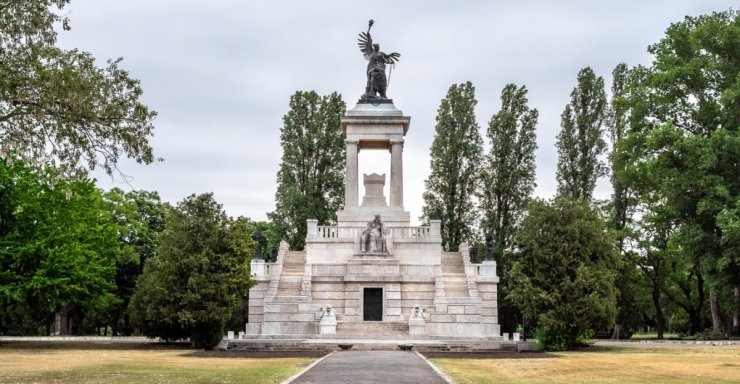

































Hozzászólások
Log in or register to comment!
Login Registration